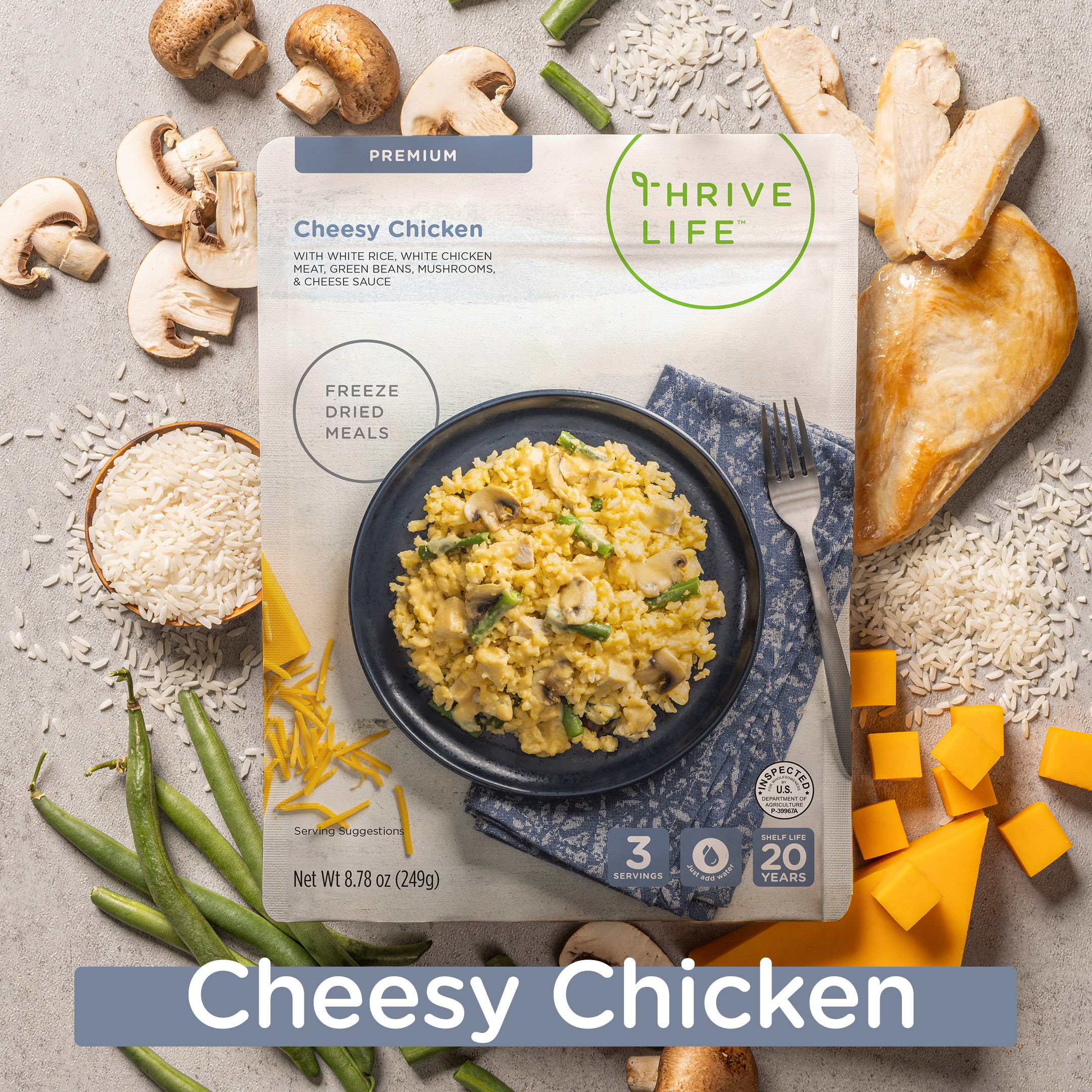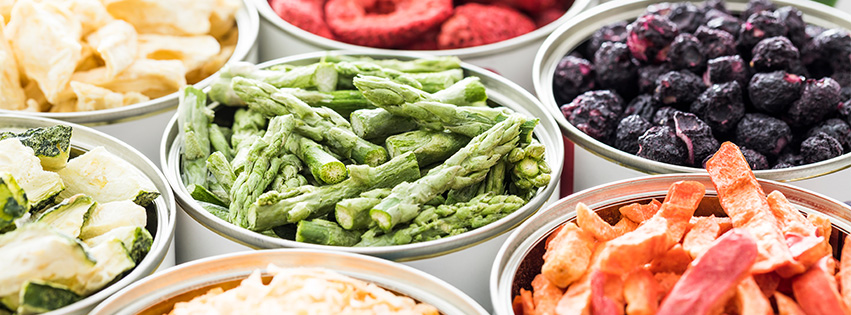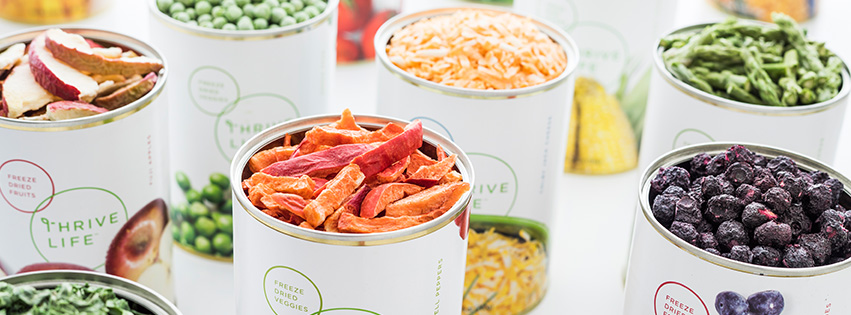When it comes to ensuring the longevity and quality of your freeze-dried foods, proper storage is crucial. Whether you are stocking up for an emergency, planning for long-term food security, or simply want to enjoy the convenience of ready-to-eat meals, understanding where to store freeze dried food can make all the difference. Freeze-dried foods are specially processed to retain their nutritional value, flavor, and texture for extended periods, but their shelf life can be significantly impacted by storage conditions.
To maximize the benefits of freeze-dried foods, it’s essential to store them in the right environment. Factors such as temperature, humidity, and light exposure play a pivotal role in maintaining the integrity of these products. By taking the time to learn and apply the best storage practices, you can ensure that your freeze-dried foods remain fresh, tasty, and safe to eat for years to come.
Ready to make the most of your freeze-dried food storage? Check out our monthly specials for 30-50% off our high quality freeze dried products.
Ideal Storage Environments for Freeze Dried Food

Choosing the right environment for storing your freeze-dried food is essential to preserve its quality and extend its shelf life. The ideal storage conditions are those that minimize exposure to factors that can degrade the food over time, such as moisture, heat, and light.
Firstly, temperature is a critical factor. Freeze-dried foods should be stored in a cool, stable environment. Ideally, storage temperatures should be below 70°F (21°C) to prevent the growth of bacteria and mold. Avoid places that experience temperature fluctuations, such as garages or attics, as these can cause condensation inside the packaging.
Secondly, humidity control is crucial. Moisture is the enemy of freeze-dried foods, as it can lead to spoilage and loss of texture. Aim to store your food in a dry place with low humidity levels. Using airtight containers or vacuum-sealed bags can provide extra protection against moisture.
Lastly, consider light exposure. Prolonged exposure to light, particularly sunlight, can degrade both the nutritional content and flavor of freeze-dried foods. Store them in a dark place or use opaque containers to shield them from light. A pantry, basement, or dedicated food storage area are all excellent choices for maintaining optimal conditions.
By controlling these environmental factors, you can ensure that your freeze-dried foods remain as nutritious and delicious as the day you stored them, ready to be enjoyed whenever you need them.
Temperature and Humidity Considerations

When it comes to storing freeze-dried food, temperature and humidity are two of the most important considerations. Properly managing these factors can significantly extend the shelf life and maintain the quality of your food supplies.
**Temperature control** is paramount. Freeze-dried foods are best stored at temperatures below 70°F (21°C). Higher temperatures can accelerate the degradation of the food, causing a loss of nutritional value and flavor over time. Additionally, frequent temperature fluctuations can lead to condensation inside the packaging, which can introduce moisture and spoil the food. Therefore, it’s crucial to store your freeze-dried foods in an area with a consistent, cool temperature.
**Humidity** is another critical factor. Freeze-dried foods are hygroscopic, meaning they readily absorb moisture from the air. High humidity levels can compromise the integrity of the food, leading to clumping, spoilage, and a shorter shelf life. To combat this, store your freeze-dried foods in a dry environment. Using airtight containers or vacuum-sealed bags can provide an extra layer of protection against moisture. For those living in particularly humid climates, investing in a dehumidifier for your storage area can be a wise decision.
It’s also beneficial to include desiccant packets or oxygen absorbers in your storage containers. These can help to maintain a low-humidity environment inside the packaging, further extending the shelf life of your freeze-dried foods.
By paying close attention to temperature and humidity, you can ensure that your freeze-dried foods remain safe and ready to use whenever you need them.
Containers and Packaging Options

Choosing the right containers and packaging options for your freeze-dried food is essential for maintaining freshness and extending shelf life. There are several types of containers and packaging materials available, each with its own advantages.
**Airtight containers** are a popular choice for storing freeze-dried food. These containers prevent air and moisture from entering, which helps to keep the food dry and free from spoilage. Glass jars with rubber seals, plastic containers with tight-fitting lids, and stainless steel canisters are all excellent options. Make sure that the containers are food-grade and free from harmful chemicals.
**Mylar bags** are another highly effective packaging option. These bags are made from a durable, food-safe material that provides a barrier against light, moisture, and air. Mylar bags can be used in combination with oxygen absorbers to create an anaerobic environment, which is ideal for long-term storage. These bags are also lightweight and easy to store, making them a convenient choice for emergency preparedness kits.
**Vacuum sealing** is a method that involves removing air from the packaging before sealing it. This process significantly reduces the amount of oxygen inside the package, which helps to prevent oxidation and spoilage. Vacuum-sealed bags can be used for both short-term and long-term storage, and they are particularly useful for storing smaller portions of freeze-dried food.
**Food-grade buckets** with airtight lids are suitable for storing larger quantities of freeze-dried food. These buckets are durable, stackable, and provide excellent protection against pests, light, and moisture. When using buckets, consider adding Mylar bag liners and oxygen absorbers for added protection.
By selecting the appropriate containers and packaging options, you can ensure that your freeze-dried food remains in optimal condition, ready to provide nourishment whenever needed.
Long-Term Storage Locations

Finding the perfect long-term storage location for your freeze-dried food is just as important as choosing the right containers. The longevity and quality of your food can be significantly impacted by the environment in which it is stored.
**Cool, dry places** are ideal for long-term storage. Basements, pantries, and climate-controlled storage rooms are excellent options. These areas typically have stable temperatures and low humidity, which help to prevent spoilage and maintain the food’s nutritional value. Aim for a storage temperature between 50°F and 70°F to maximize shelf life.
**Avoid areas with temperature fluctuations**. Garages, attics, and sheds may experience extreme temperature changes, which can lead to condensation inside the packaging. This moisture can degrade the quality of freeze-dried food and shorten its shelf life. Consistent temperature control is key to preserving your food for the long haul.
**Dark environments** are preferable for storing freeze-dried food. Exposure to light can cause the breakdown of nutrients and affect the overall flavor. Store your containers in a dark place or use opaque packaging to shield the food from light exposure.
**Pest-free zones** are crucial for maintaining the integrity of your food supply. Ensure that your storage location is clean and free from rodents, insects, and other pests. Use storage containers that are resistant to gnawing and invest in pest control measures if necessary.
**Proper ventilation** is another important factor. Good airflow helps to prevent the buildup of moisture and mold. Avoid storing your freeze-dried food in sealed, non-ventilated areas like closets or cabinets without proper air circulation.
By carefully selecting and maintaining your long-term storage locations, you can ensure that your freeze-dried food remains safe, nutritious, and ready to use whenever you need it.
Common Mistakes to Avoid
Storing freeze-dried food correctly is essential for maintaining its quality and extending its shelf life. However, many people make common mistakes that can compromise their food supplies. **Avoiding these errors** will ensure your freeze-dried food remains in optimal condition.
One of the most frequent mistakes is **storing food in areas with high humidity**. Moisture can penetrate packaging, leading to spoilage and loss of nutritional value. Always choose dry storage locations and use moisture-absorbing packets as an added precaution.
Another common error is **failing to rotate your stock**. Even though freeze-dried food has a long shelf life, it is not indefinite. Implement a rotation system to use older items first, ensuring that none of your supplies go to waste. Label containers with purchase or packing dates to help keep track.
**Not sealing packages properly** can also be detrimental. Improperly sealed containers allow air and moisture to enter, which can spoil the food. Use vacuum-sealed bags or airtight containers to preserve the integrity of your freeze-dried food.
**Ignoring temperature control** can lead to degraded food quality. Extreme temperatures can cause chemical changes in the food, reducing its nutritional value and flavor. Store your food in temperature-stable environments to avoid these issues.
Lastly, **overlooking pest control** can result in contaminated food supplies. Ensure your storage area is clean and free from pests. Use pest-resistant containers and consider additional measures such as traps or repellents.
By being mindful of these common mistakes, you can significantly improve the longevity and quality of your freeze-dried food. **Check out our monthly specials for 30-50% off our high-quality freeze-dried products** at thrivefreeze.com.


